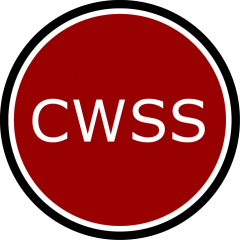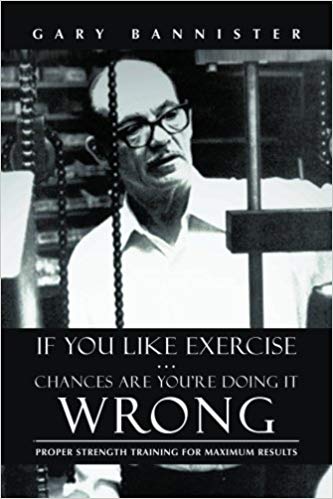“If you’ve been suggested for low-back surgery, you would be crazy not to try the MedX Lumbar Extension machine (and its protocol) as a last resort,” -Dr. Vert Mooney, a renowned orthopedic surgeon, University of California, from the book: If You Like Exercise…Chances Are You’re Doing It WRONG.
Often the cause of lower back pain is weak low back muscle…
Author Gary Bannister rekindles the high-intensity training principles of Arthur Jones, founder of Nautilus. He builds a strong case for low back strength, providing history and studies by Jones, independent research, diagrams and cites numerous benefits of the MedX Lumbar Extension, the same machine at CWSS.
Arthur Jones was the first to realize the absolute, imperative need to stabilize the pelvis in order to isolate and train the smaller, weaker lumbar extensors. Today, it remains the industry gold standard.* He also realized chronic atrophy of these smaller lower back muscles is often the cause of lower back pain. Strengthen the lower back, and the pain is eliminated.
The figure above illustrates the three risk factors associated with the muscles that extend the lumbar spine and helps explain why – according to medical estimates – 80% of people suffer from back pain in their lifetimes.
Dr. Brian Nelson, an orthopedic physician from Minnesota, had heard it many times before: “We’ve tried everything with this patient. He needs an operation.” Dr. Nelson introduced 38 patients (that physicians in his area had abandoned) to the MedX Lumbar Extension machine’s official three-month protocol of brief, infrequent exercise. To the dismay of his peers, he published the results of his efforts in the January, 1999 edition of Archives of Physical Medicine and Rehabilitation. 35 of the 38 patients did NOT require surgery and the average of 21 MedX sessions saved more than a few backs. MedX therapy was $1995.00; a single surgery, $60-160,000.00. The study was not “official” research (it lacked a control group and a randomized selection of participants, both of which were impractical in private practice) but the results were impressive. “It does not prove,” concluded Dr. Nelson, “that increased strength prevents surgery. The study does suggest that certain people can avoid surgery, which is good news.” The outcomes were verified at follow-up intervals averaging 16 months.
*Nautilus inventor, Arthur Jones, spent 14 years, designed 3,000 prototypes and spent $88 million when he finally introduced the MedX Lumbar Extension machine in 1987.
ASK YOUR TRAINER TODAY ABOUT OUR LUMBAR EXTENSION MACHINE AND START INCORPORATING THIS AMAZING EXERCISE IN YOUR ROUTINE!
STAYED TUNED FOR PART 2 OF THE CASE FOR LOW BACK STRENGTH
TESTIMONIAL:
“You should know that since I started working out a month ago, I have noticed a significant decrease in my back pain.
A few years ago I was diagnosed with spinal stenosis in the lower right area of my back. A few months ago, Keith Morton suggested that a periodic workout on CityWide’s back machine might bring meaningful relief from my pain. Though I appreciated Keith’s concern, I was skeptical. Quite frankly, the main reasons I decided to let Denise put me through this specific workout, was that I kind of owed it to Keith and Denise for showing real concern for my condition and that it would only take a few minutes of my time, once or twice a week.
Since my normal exercise routine is walking four blocks once or twice a week, I can think of no other reason for how much better I feel today than the past few years.”
–Rick Greenwood, July 2019
Denise Morton on our MedX Lumbar Extension Machine.
Denise is completing a FULL range of motion with a 2-second hold at the bumper. She hits failure at 2:02.


